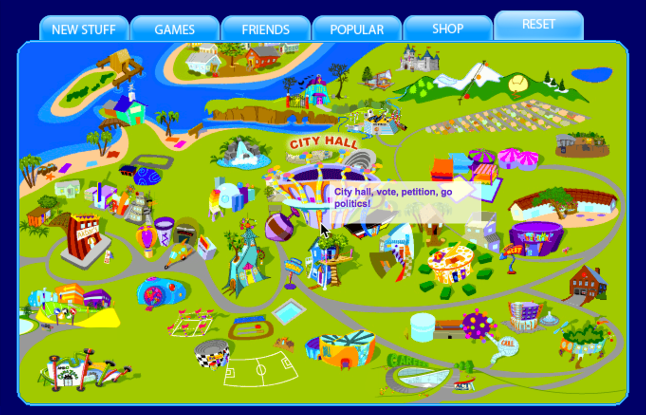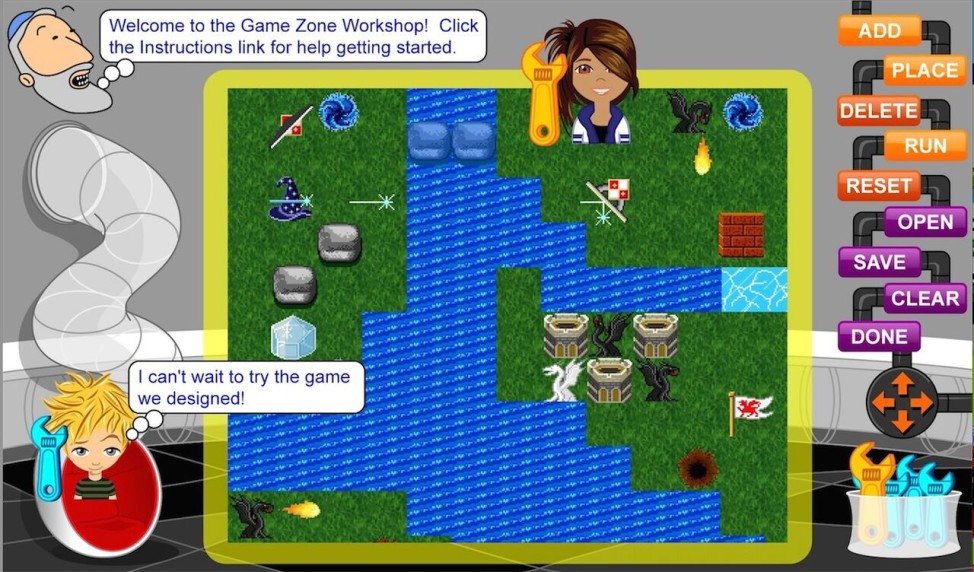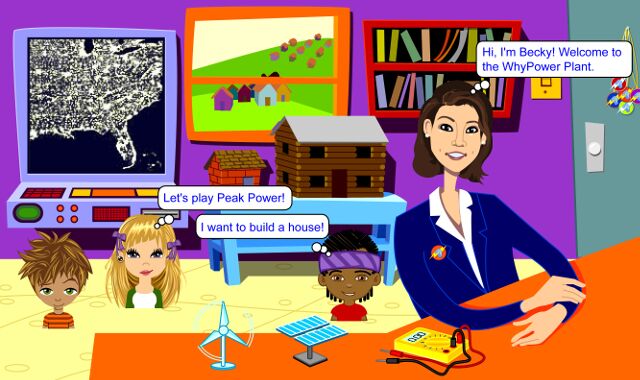
Whyville is a virtual island located off the coast of Southern California. Citizens visit the many locations on the map to chat, play games and learn together. (Numedeon)
Virtual worlds have been immersing people in fantastical, computer-simulated environments for years – using only avatars. One of the oldest is Whyville, the first learning and game-based virtual world for children.
I am now 27 years old and am a qualified lawyer and accountant who is a director of a large wholesale company … in Australia, and yet I still find it inspiring to visit the website that played such a major role in my childhood and educational development – Benita McKay, Australia
Whyville was designed for kids 8-15-years-old as an inquiry-based learning ecosystem for science, technology, engineering and math (STEM). The name reflects the founders’ interest in the “why” of things. The site, social by design, is built on the idea that collaboration and cooperation are an important part of learning.
Its co-founder and Numedeon, Inc.CEO, James Bower, said Whyville is recognized in the industry as the first of the virtual worlds.
“It innovated many aspects which have become sort of standard features of virtual worlds now, you know – avatars and … children being able to make their own, pick avatars, virtual world currency, all sorts of things, including safety which we’ve been focused on for a long time,” he said.

Whyville’s game design platform, sponsored by AMD, allows citizens to design games together. Other citizens play and rate the published games, and the game designers earn clams – Whyville’s virtual currency – when their games are played. (Numedeon)
Unlike virtual worlds that use fantasy backgrounds for interaction or gameplay, Whyville mirrors the real world, allowing users to track sharks, for example, or visit a simulated coral reef. They can make their own games and engage in activities sponsored by AMD, NASA, the Getty Foundation and many others.
“We believed that the closer Whyville was to the real world, the easier it would be for children to translate from what they’re learning in Whyville to the real world,” said Bower, a neuroscientist by training.
The average Whyvillian is 14-years-old. And 78 percent of users are girls – a statistic that prompted the National Science Foundation to gauge the girls’ unexpected interest in a STEM environment.
Bower said girls “tend to like to learn in more collaborative settings than boys do.” In Whyville, it was okay for girls “to be smart” and to be “interested in science,” he said. In the real world, it was harder for them to “express an interest in science and math because of social pressure.”
Whyville taught me that science is not the subject of intimidation. Rather, it is a fun and intriguing subject that I learned to love after overcoming my fears – Miranda Bowman

Citizens visit the WhyPower Station to play games relating to power plants and energy efficiency. (Numedeon)
Miranda, now 23, said the things she learned at Whyville helped her with science in school and later showed her the way to her career path as a graphic designer and part-time YouTuber.
Whyville provided a combination of art and science during my childhood. I thought it was just a game and that such a combination [was] too good to be true. Suddenly, I realized that the very things that made me happy as a child could become a reality – a career, even.
Many Whyvillians, now grown up, still keep in touch. Danielle M., who joined at 12, didn’t expect that she would keep coming back.
When I first joined, I was really excited about being able to customize [my] own avatar and make friends with other kids online. I really had no idea how helpful and influential Whyville would become, and that I would still be using it at age 24.
Twenty-one-year-old Zachary Townsend suffered from Tourette’s syndrome and had to put up with a lot of harassment in middle school because of his physical and verbal tics. It was hard for him to make close friends, so he turned to video games, social media, and youth groups. But he said it was Whyville and the lifelong friends he made there “that have been most constructive for my self-worth, confidence, and anxiety”
I never disclosed my condition to anyone on Whyville because I never had to, and I was accepted for who I was there. By becoming one of the richest citizens, and having a lot of valuable ‘face parts,’ I was able to experience what it was like to be at the top of the social ladder.
Derek O’Brian. 26, was already interested in science and math when he joined Whyville at 13.
But Whyville brought science, technology, engineering, and art into a single mini economy where I was incentivized to compete and work together with others. In this way, without ever demanding anything from me in return, Whyville provided me with so much. And I still log on from time to time to see how it’s growing and developing and to help new citizens find their feet.
Why and why not
When Numedeon, a spin-off from the California Institute of Technology, launched Whyville in 1999, the idea was to evaluate how digital technology can enhance learning. Throughout that process, Whyville built what Bower called “an engine which itself represents the basis for a learning ecosystem” and which includes many digital forms of engagement.
He argued that realizing the promise of technology for learning requires a deep effort to take existing knowledge and even traditional forms of learning and “merge it, morph it into this technology.”
That is the premise of a new collaboration with educational organizations for math education that will help “fundamentally change and improve the way that young children learn math,” according to Bower.
Also in the works is Whynotville, a site for older kids over the age of 15. The new world will be designed by current and former Whyvillians, some of whom, like Miranda Bowman, now work in digital design in the real world.

4 responses to “Why Virtual Whyville Still Inspires”
Whyville – seems to be the only site that truly cares about education and socialization. My son was on Whyville for about 5 years and as a concerned parent I looked over his shoulder from time to time only to see very positive things going on. Things that his mother and I could not have taught him. He took on an interest in science that seemed to come out of nowhere, but I suspect it was the encouragement of his friends on Whyville. My son is in college now studying to be a writer and writes the science column for his college newspaper. I want to thank the people who created Whyville – there is no real advertising or charge to join so I am guessing it is a labor of love to the children of the world.
First, I wanted to thank Aida for a wonderful article. Whyville is a complex place which the article captures very well. Second, of course, I want to thank our users who contributed – in case anyone wonders, their remarks came entirely from them – not managed in any way by us. 17 years ago, when we started designing Whyville we could only hope that it would have the impact it has – it continues to amaze us every day what our users have been able to do with the tools we have provided. Finally, in fact, while Whyville is run by a for profit company that has managed somehow to keep its head above water for 17 years, whyville was and is a labor of love and care, as well as a platform to learn and invent with “our children” how the amazing digital world can be used to advance understanding and learning. In the rough and tumble world of internet business and innovation – it is the voices of our kids as well as their teachers and parents that keep us going, as well, of course, as our sponsors who also put children’s learning first.
It was a pleasure. Many thanks to you and all those who offered their time and insights.
Hi , I wanted to thank the writer for his wonderful article, I want to meet Aida on skype to talk to her about whyville so if you can do that for me please let me know .